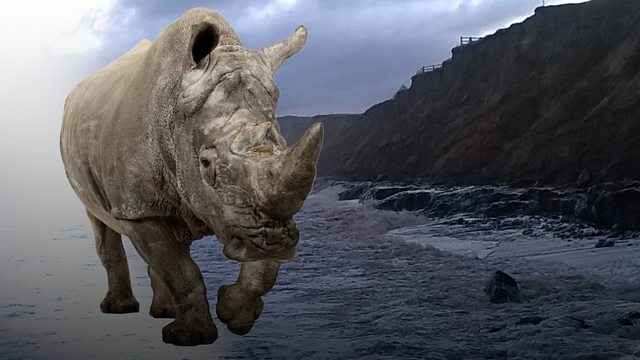
Beach rhino revealed by storm surge
The rhino found on a Norfolk beach dates back about 700,000 years.
Fossil experts have uncovered evidence of a rhino on a Norfolk beach about 700,000 years ago after a storm surge revealed the animal's vertebra.
Heavy seas pounding the cliff and beach in West Runton, near Cromer, in January unearthed part of the atlas bone - the first cervical vertebra which articulates with the skull.
"There鈥檚 been quite a bit of interest in scouring the Cromer cliff area for geological finds recently," fossil expert Martin Warren said.
The former curator at Cromer Museum added: "In the aftermath of storms more people are coming to see what they can find... but the West Runton Freshwater Bed is a precious scientific resource."
The neck vertebra, thought to come from the now extinct Stephanorhinus hundsheimensis, which is about the size of a Sumatran rhino, is from a time known as the Cromerian Interglacial.
"Although this specimen was found in West Runton, a huge wealth of Pleistocene [Ice Age] fossils can be found all along the Norfolk coast from Sheringham to Happisburgh," palaeontologist Dr James Neenan, from the Oxford University Museum of Natural History, said.
"This period was millions of years after the dinosaurs went extinct, in a time when mammals were dominating the Earth.
"Some of the animals that lived in Norfolk during this time can still be found today, such as small rodents, bats, snakes and otters.
"But there were also some very different, often enormous, animals around at this time too, like mammoths, giant beavers, bison, wolves, lions, and, of course, rhinoceros," he said.
The specimen will now be sent for further scientific identification.
Duration:
This clip is from
More clips from Look East
-
![]()
Renovated pub named King Charles III—Evening News, 15/01/2023
Duration: 01:03





